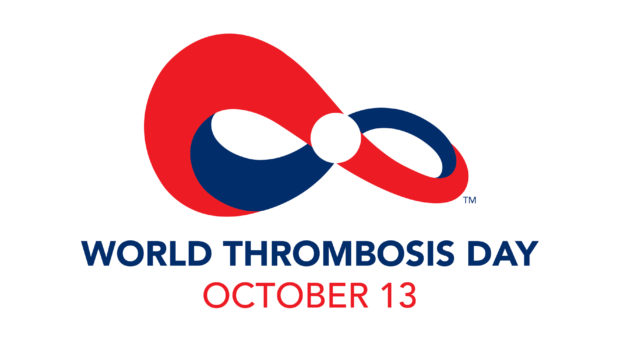
What is venous thromboembolic disease and who is at risk?
 Associate Professor Lai Heng Lee
Associate Professor Lai Heng Lee
Senior Consultant, Department of Haematology, Singapore General Hospital, Singapore
Chairman, Asia Pacific Society of Thrombosis and Haemostasis
Venous thromboembolism (VTE) occurs when blood clots excessively in the veins. A deep vein thrombosis (DVT) is a blood clot in a vein, most often occurring in the legs.
A potentially fatal complication of DVT is a pulmonary embolus (PE), which occurs when part of the blood clot has broken off and become stuck in the blood vessels in the lung. Together DVT and PE are different spectrums of VTE.
Although VTE can occur without any apparent reason, there are many conditions that increase the risks of developing VTE. These include immobility from prolonged bed rest from illnesses or after surgery, paralysis of the limbs, damage to the veins, medical illnesses or genetic factors that cause the blood to clot more easily than normal, use of oral contraceptives, pregnancy, smoking and obesity.
Typical symptoms of DVT are warmth, redness, pain and swelling of the calf. DVT is also well known to occur without any symptoms and only diagnosed if a complication such as a PE occurs. Although PE causes symptoms such as chest pain and breathlessness, it is not uncommon for PE to present as collapse and sudden death. Therefore, it is important to be vigilant to the diagnosis of VTE in people at risk, and there is a lot that patients and physicians can do to prevent and treat abnormal blood clots.
Prevention and treatment of VTE
 Professor Pantep Angchaisuksiri
Professor Pantep Angchaisuksiri
Division of Hematology, Department of Medicine
Ramathibodi Hospital, Mahidol University, Bangkok, Thailand
Council member of the International Society on Thrombosis and Haemostasis (ISTH) and member of the ISTH Steering Committee for World Thrombosis Day
VTE is a major cause of preventable death and disability. It is a common complication among hospitalized patients, with approximately 60% of cases of VTE associated with hospitalization.
Hospital-associated VTE is the number one ranked cause of death and disability among the common causes of hospital-associated adverse events. Ensuring that hospitalized patients receive appropriate VTE prevention (thromboprophylaxis) is important to reduce the burden of VTE.
The rationale for thromboprophylaxis is that the clinical diagnosis of VTE is insensitive and unreliable, and so VTE is often unrecognized. However, unrecognized and untreated VTE has harmful consequences such as fatal pulmonary embolism, long term morbidity from post-thrombotic syndrome or chronic thromboembolic pulmonary hypertension, which has great impact on quality of life and health care cost.
Prophylaxis can be 1) mechanical (such as stockings, foot pumps, intermittent pneumatic compression) or 2) pharmacological (anticoagulant drugs). Assessing thrombotic risk versus bleeding risk is recommended prior to initiation of VTE prophylaxis.
Pharmacological prophylaxis should be commenced after weighing the bleeding risk versus thrombotic risk. If the bleeding risk and thrombotic risk are high, mechanical prophylaxis is recommended. Every patient should be offered VTE risk assessment and appropriate thromboprophylaxis.
VTE risk assessment at the time of hospital admission and the provision of appropriate thromboprophylaxis in patients at risk, such as those undergoing surgery or those hospitalized with medical illness, is effective in reducing the frequencies of VTE-related death and readmission with nonfatal VTE.
Life on anticoagulation
 Professor Hugo ten Cate
Professor Hugo ten Cate
Director of the Thrombosis Expertise Center at the Cardiovascular Center, Maastricht University Medical Center (MUMC+) in Maastricht and PI at the Cardiovascular Research Institute Maastricht (CARIM), The Netherlands
Co-Editor–in-Chief of Thrombosis Journal
Patients with acute VTE must be treated with anticoagulant drugs to allow resolution of the venous clot and to prevent recurrence of thromboembolism.
Patients must be treated with anticoagulation indefinitely if a VTE is unexplained, if there are persistent risk factors for thrombosis, and/or there is recurrent VTE.
Indefinite anticoagulation obviously is a burden to the patient and safety of treatment is a very important issue to take into account. Lifelong anticoagulation, when indicated, requires at least an annual check between physician and patient to assess the safety of anticoagulation, i.e. bleeding side effects, co-morbidity and other medication, recurrent VTE, or other thrombotic or bleeding episodes.
For patients on vitamin K antagonists (VKA), the GP, specialist or anticoagulation clinic (AC) is involved in controlling the international normalised ratio (INR) and recommending appropriate doses of VKA. For long-term use of VKA, self-management of INR-guided VKA should be aimed for, as it improves the quality of anticoagulation, hence its safety.
For the recently introduced direct oral anticoagulants (DOAC) no repeated laboratory testing is needed; still patients should be carefully instructed about side effects and other issues that are similar to the use of VKA.
Annual (or more often) checks of renal and liver function are important, preferably also by an AC clinic. For both VKA and DOAC adherence to medication is imperative and this should be a key objective in the long-term management of anticoagulation!
A life on anticoagulation remains a burden, but let’s try to make it as safe and tolerable as possible!
One Comment